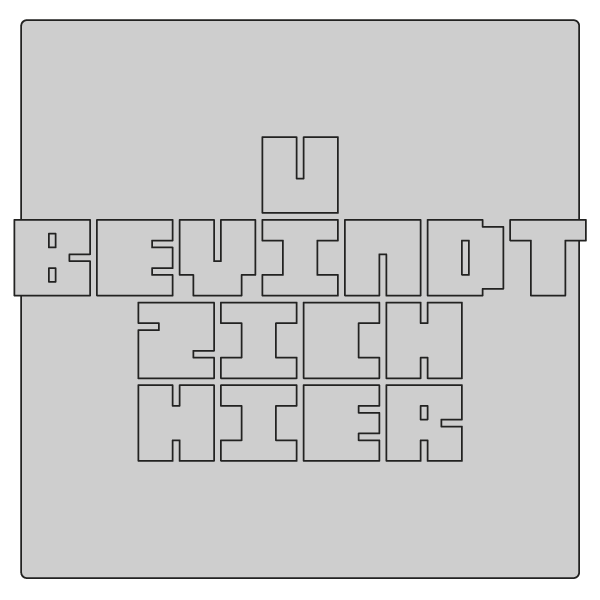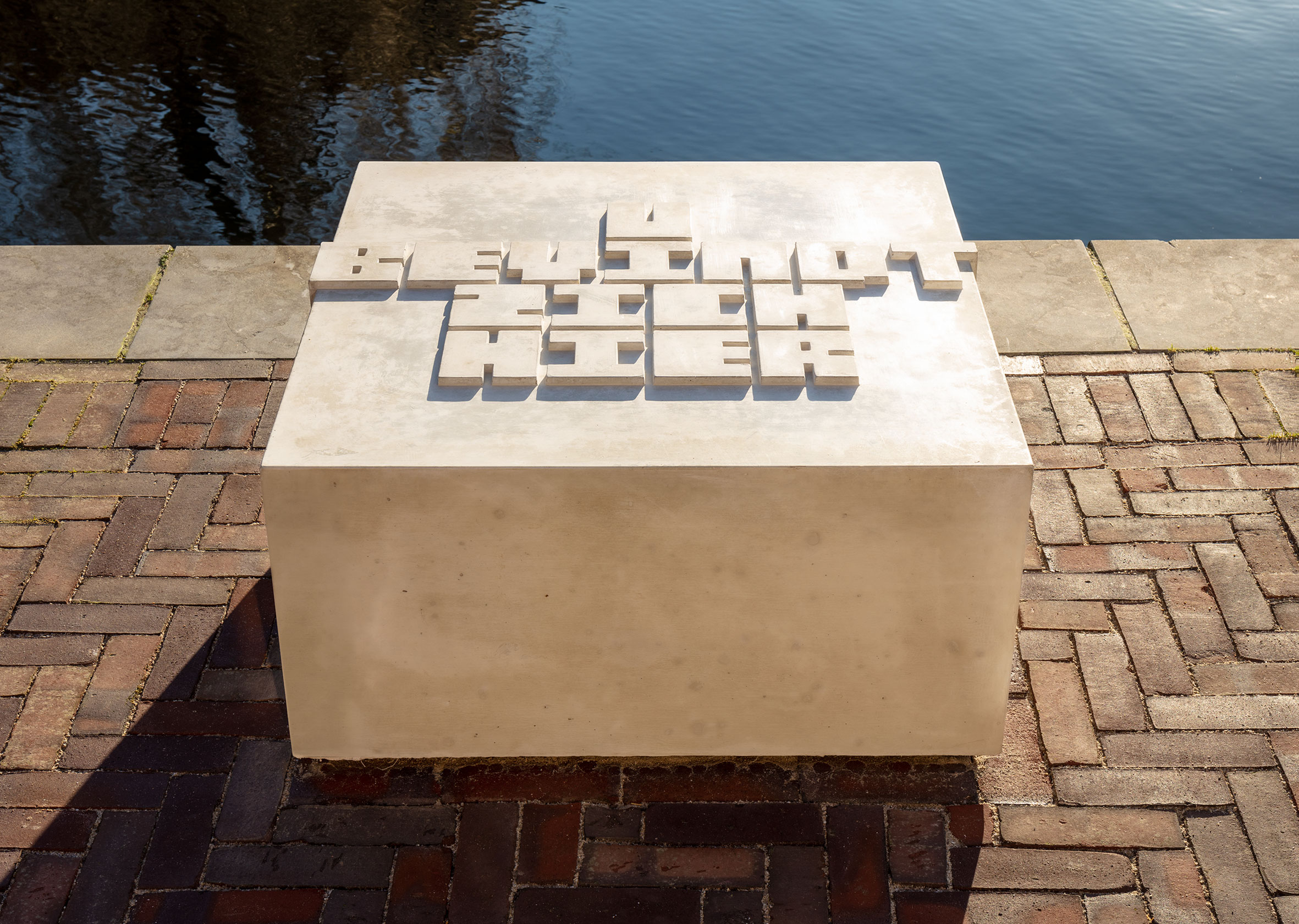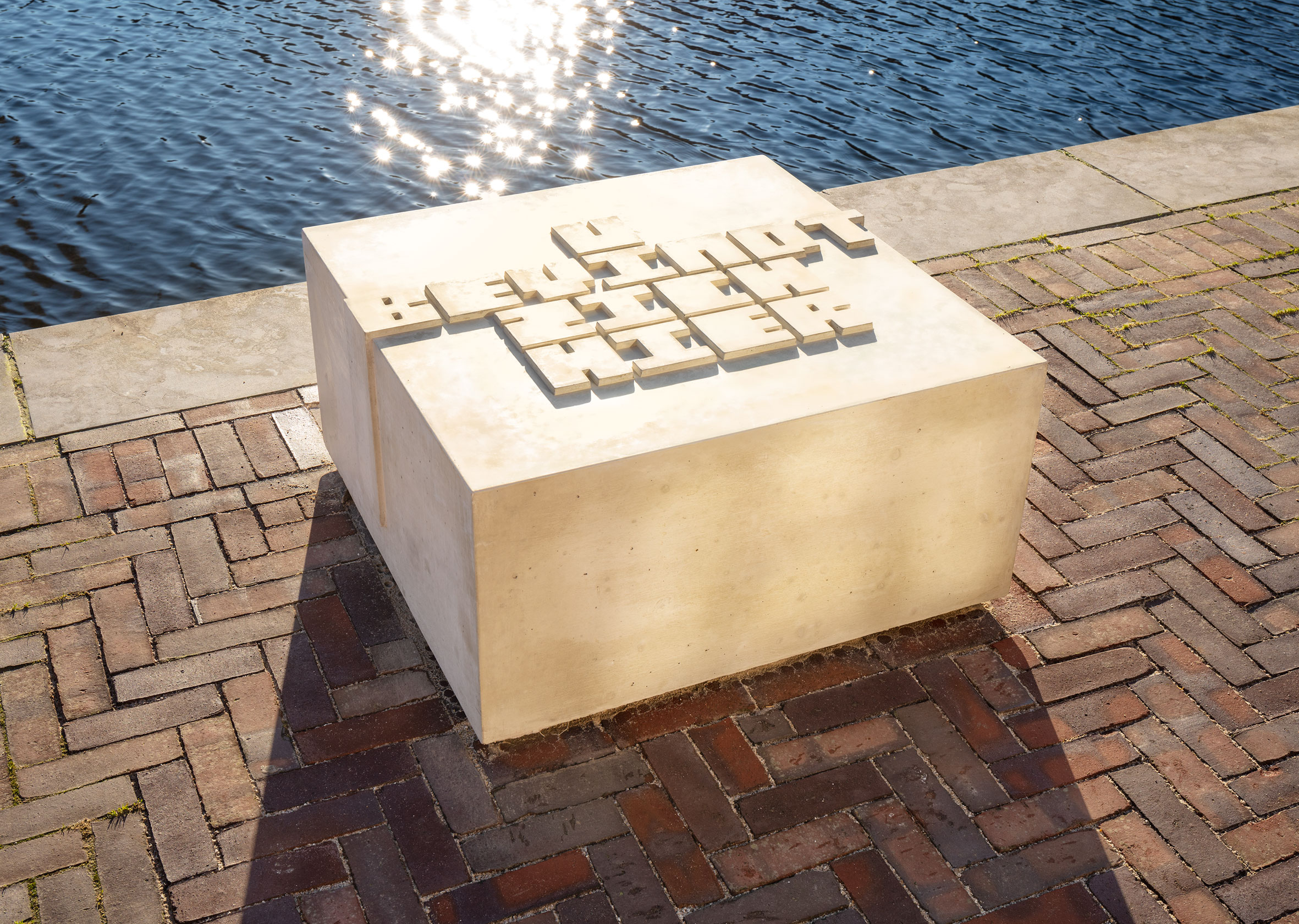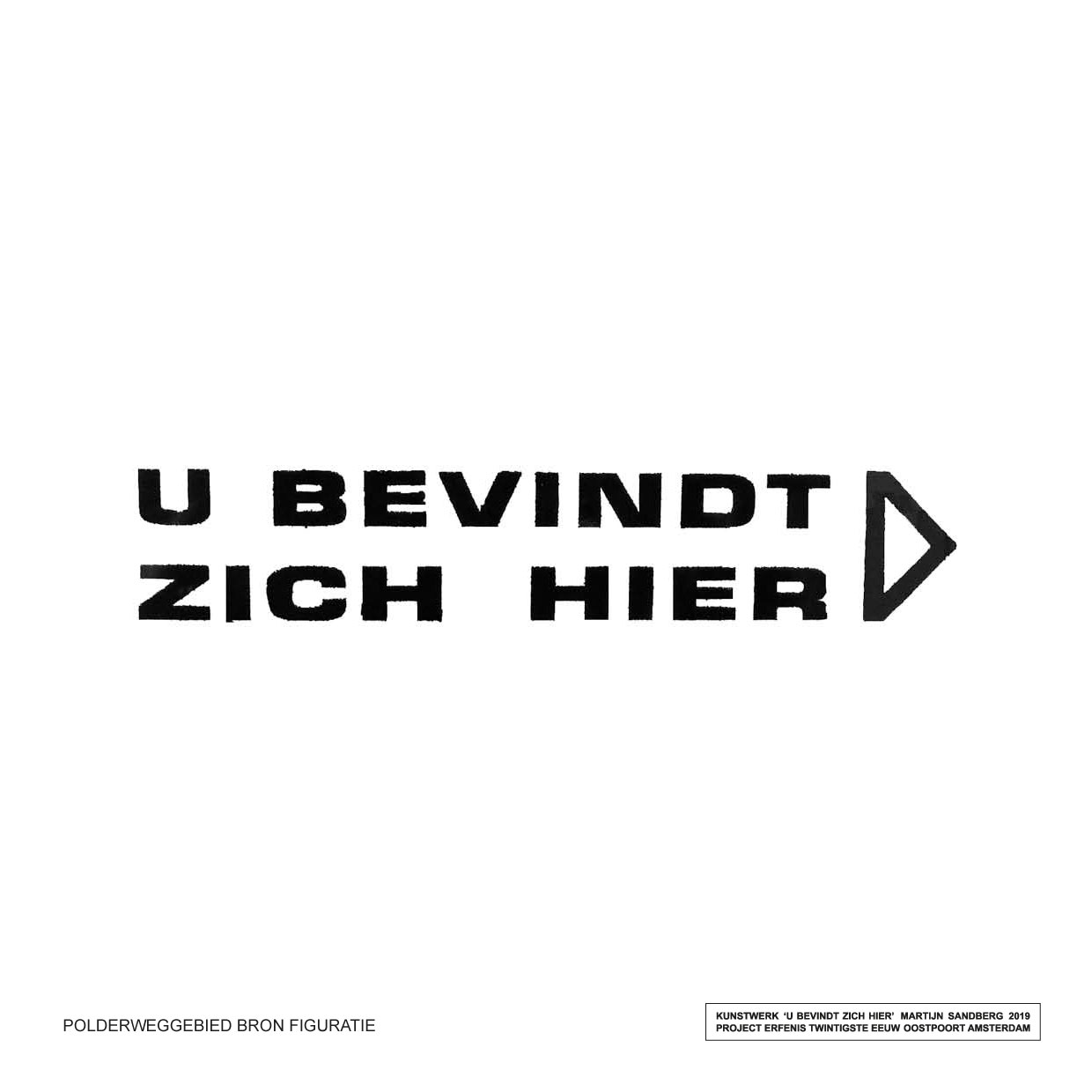You are here
The ‘Oostpoort’ has been the name of this location since 2008; it was known as the ‘Polderweggebied’ until then. The historic old buildings of the Ooster (Eastern) gasworks have been preserved within new developments. They included the military police barracks used as a ‘reporting station’ in the Second World War during the German occupation. The buildings of the Ooster gasworks are the ‘quiet witnesses’ of this episode in the history of the Polderweg district; it was the ‘intake site’ for the last great Amsterdam razzia on 20 June 1943.
Because the former Polderweg district is on the same spot as the artwork ‘You Are Here’, I have chosen figuration for the artwork that contributes in one way or another specifically to consciousness of the location. This is the point of departure for the artwork. Just like the arrow on an urban chart or map, the artwork refers, precisely and exactly, to the place. The figuration marks the location: ‘You Are Here’.
The pedestal figuration concentrates attention and ‘focus’ on the place, without directly describing it, making it visible, or naming what has happened here. It goes without saying that conscious orientation on the site will lay bare the ‘invisible’ history of the place, the ‘legacy of the twentieth century’.
‘You Are Here’. It is up to the reader, it is up to ‘you’ to immerse yourself in this. ‘You’ – so everyone who sees and reads the pedestal – are called upon and may feel yourself called upon. Invited or uninvited, wanted or unwanted, the pedestal addresses the public. With these words the column for the Polderweg district actually offers everyone the opportunity to partner the artwork directly.
At the same time, ‘You Are Here’ may be interpreted as a symbolic emblem and it arouses questions philosophical in nature. If, when orientating your own position the precise spot is indicated, then why is it mentioned since you are just standing here already? What is the point of that? Isn’t that a superfluous statement? Then where am I? What am I not seeing here, that there might be to see?
In fact, the artwork appeals to one’s imaginative capacities. Everything is layered. Nothing is what it seems. Nothing seems like what it is. What is, was once. What is now called ‘Oostpoort’ on the map, was once known as ‘Polderweg district’.
In 1987, a commemorative memorial was placed in the Transvaalstraat, consisting of a two-tone star of David on the wall, in memory of the Jewish inhabitants of the Transvaal neighbourhood who were deported.
Because the pedestals of the ‘You Are Here’ artwork are located in Oostpoort, the former Polderweg district, I consider it a ‘logical’ as well as sensible choice to also include reference to ‘Polderweg district’ in the series of artworks at this location.
MS
History
“Between July 1942 and September 1943, the deportation of Dutch Jews to extermination camps got underway. On 20 June 1943, the Grossaktion occurred, a round up in which the last remaining Jews in Amsterdam East and South got their marching orders. German soldiers and Amsterdam police closed off streets so that nobody could escape; then the police went into houses to collect the inhabitants and take them to the points of assembly – the Olympiaplein, the Sarphati Park and the Polderweg.
From there, an estimated 5500 Jews were put on the tram to Muiderpoort station and then travelled by train to Westerbork transit camp. For most, the journey continued on to the extermination camps of Auschwitz-Birkenau, Bergen-Belsen and Sobibor.‘’ (01)
Artwork: You Are Here
Artist: Martijn Sandberg
Material: concrete
Measurements: (lxwxh) 80cm x 80cm x 40cm
Project: Legacy of the Twentieth Century
Realisation and completion: 2019
Location: Oranje Vrijstaatkade, Oostpoort, Amsterdam
Commissioned by: Amsterdam Municipality, District Oost



